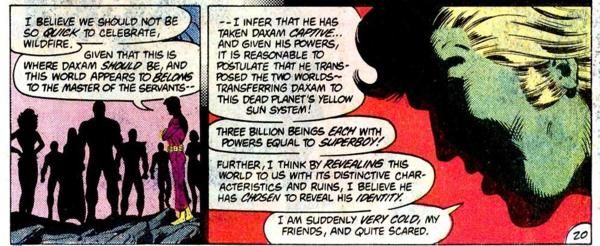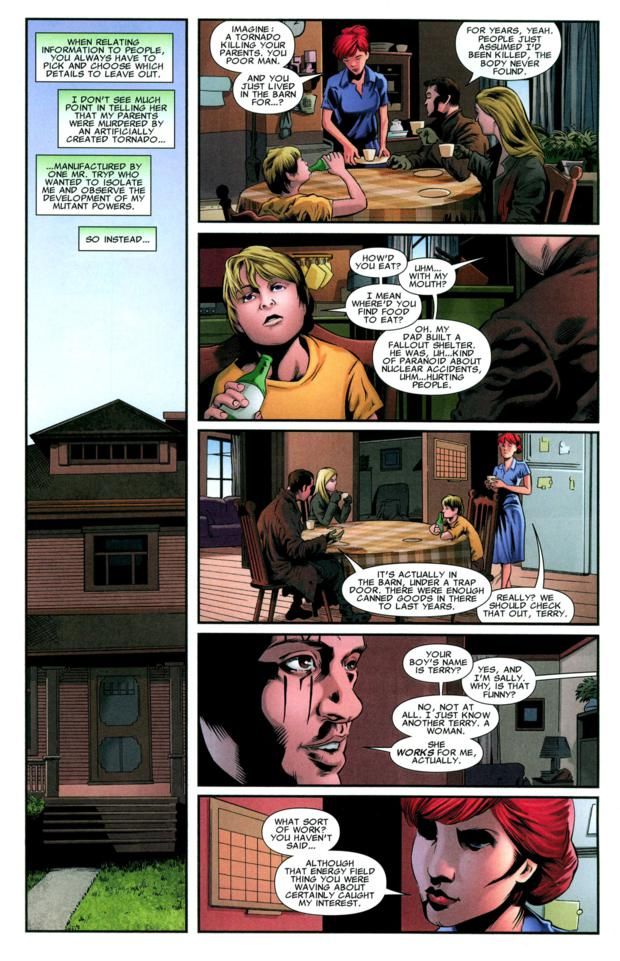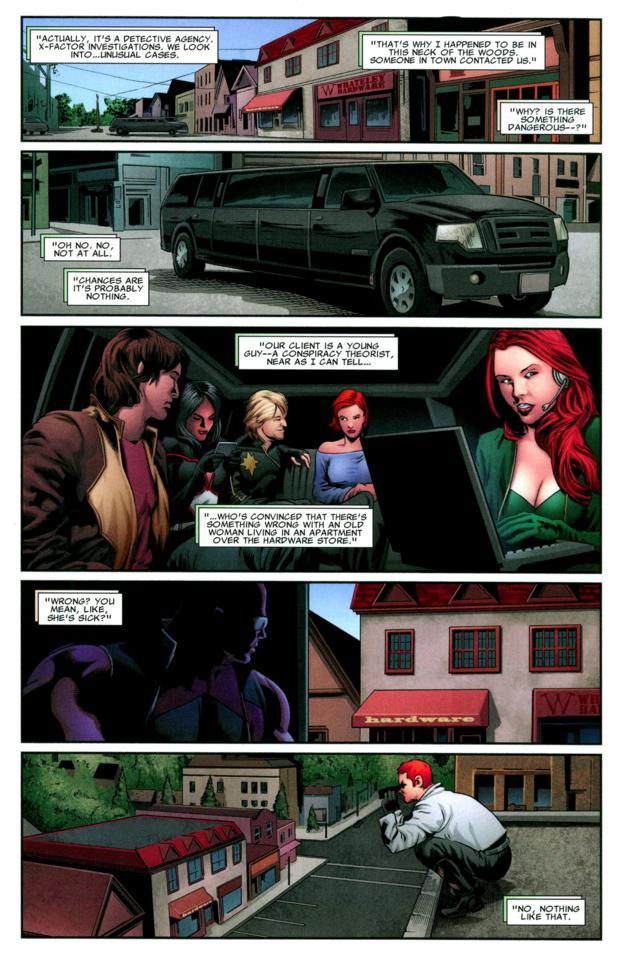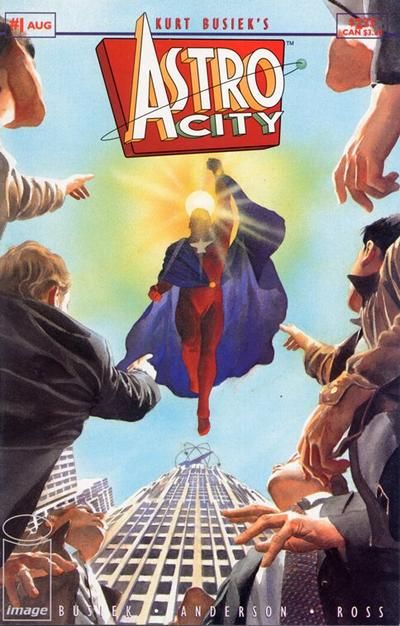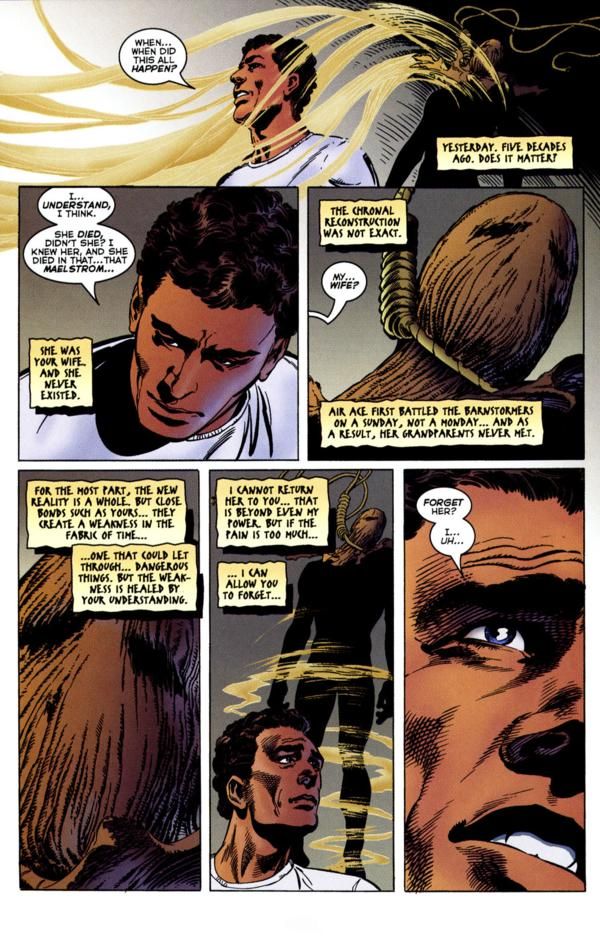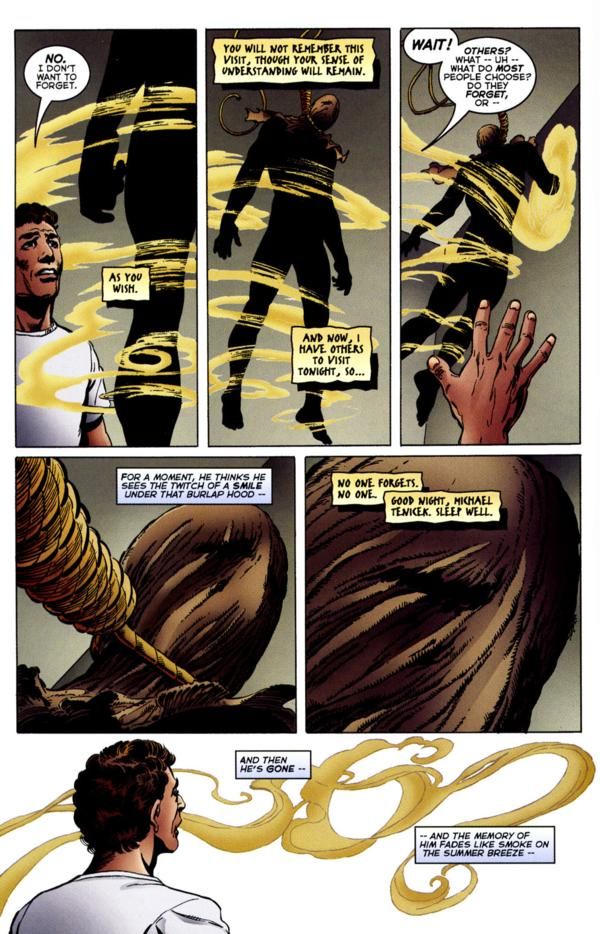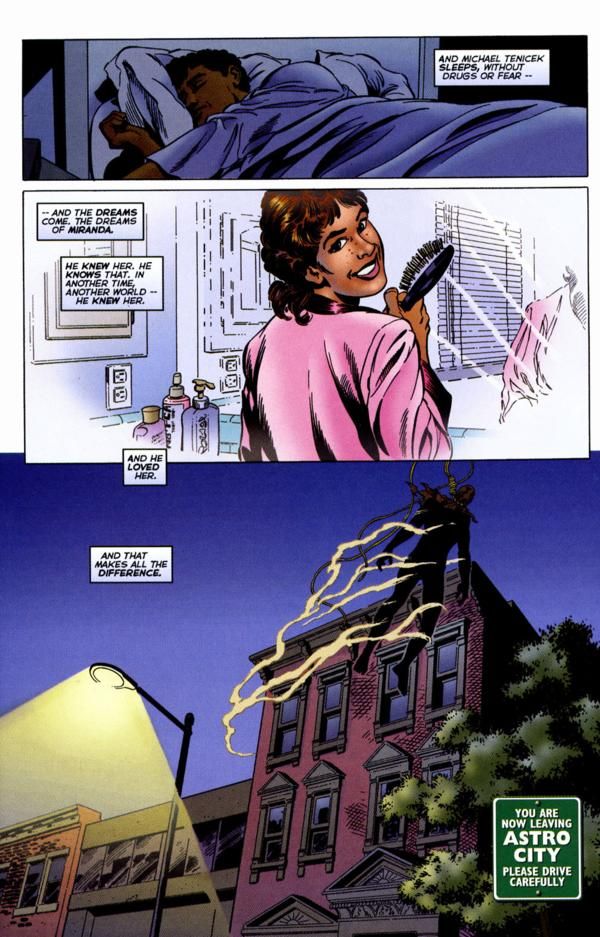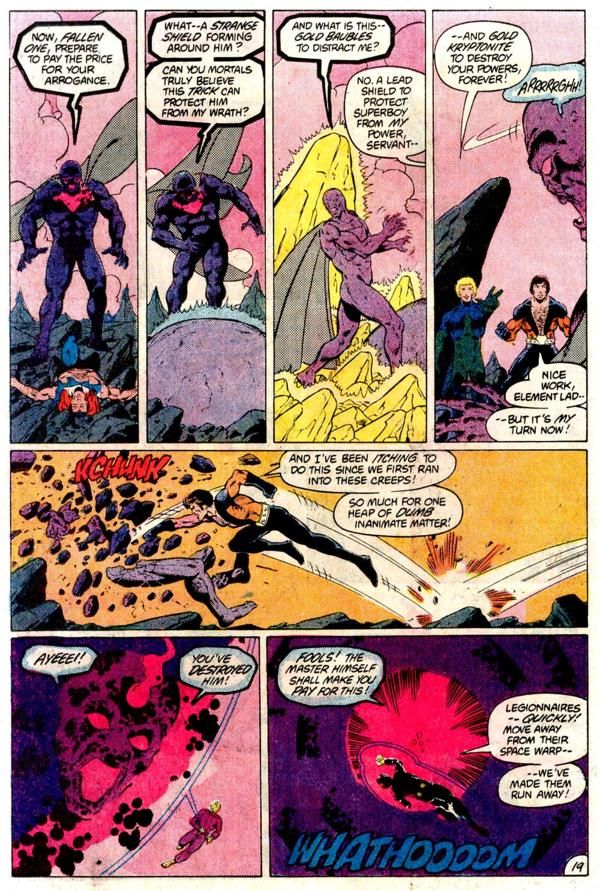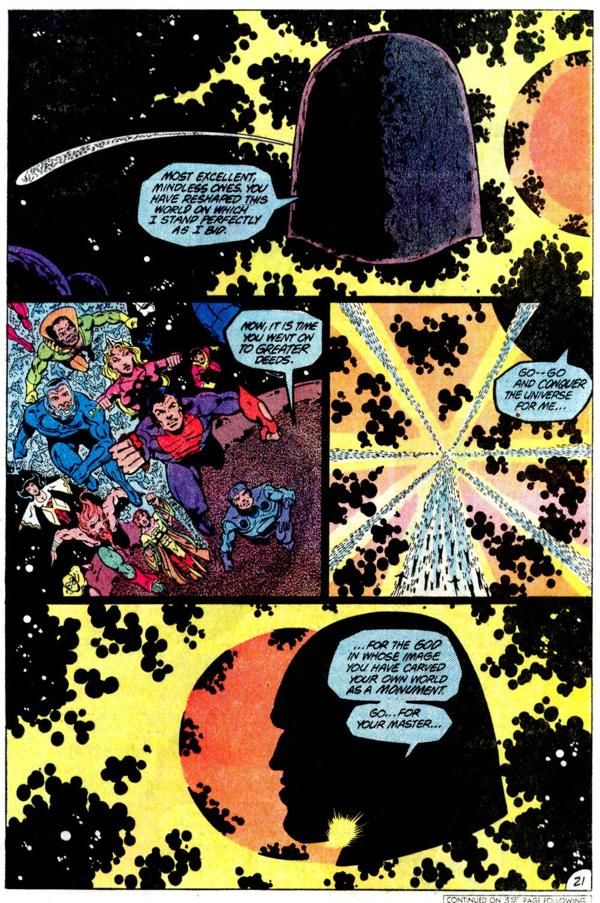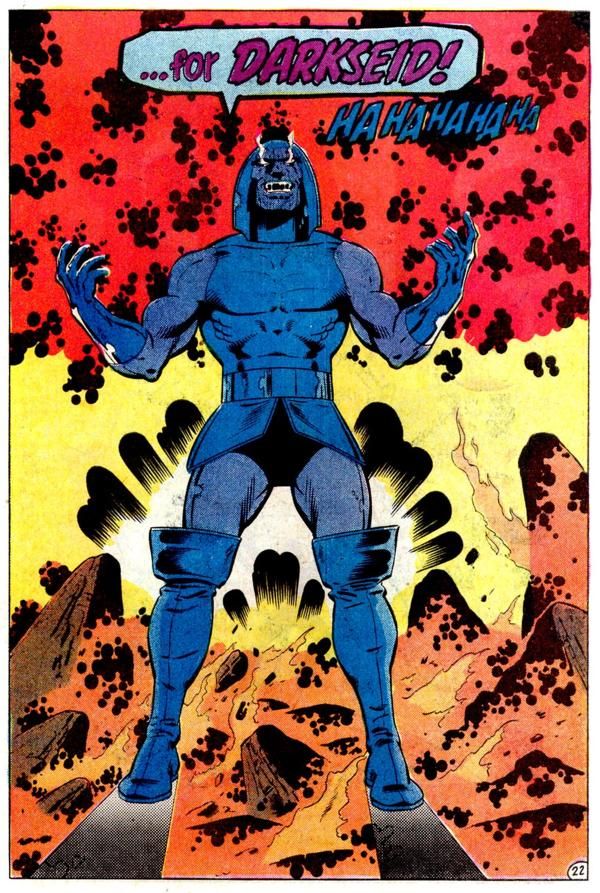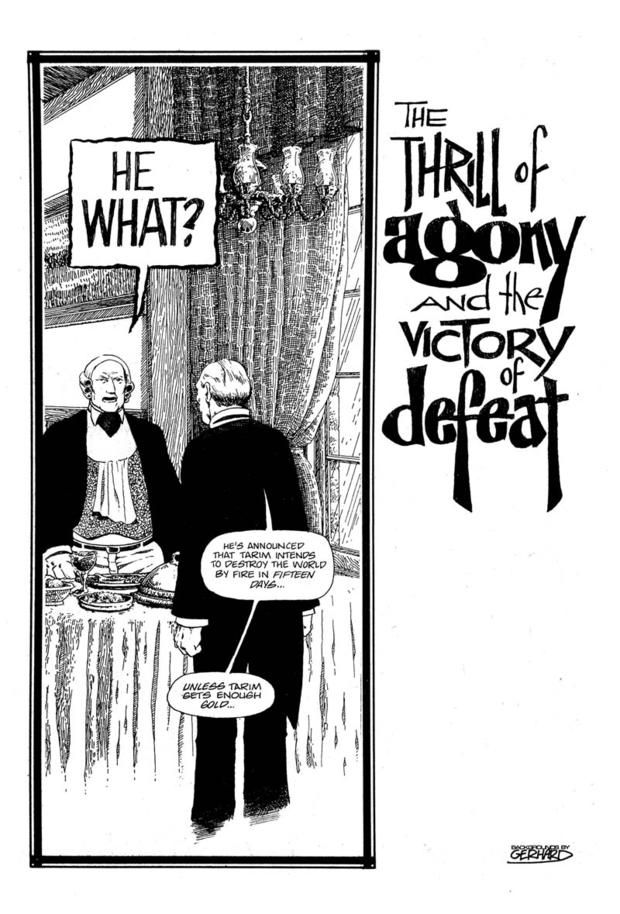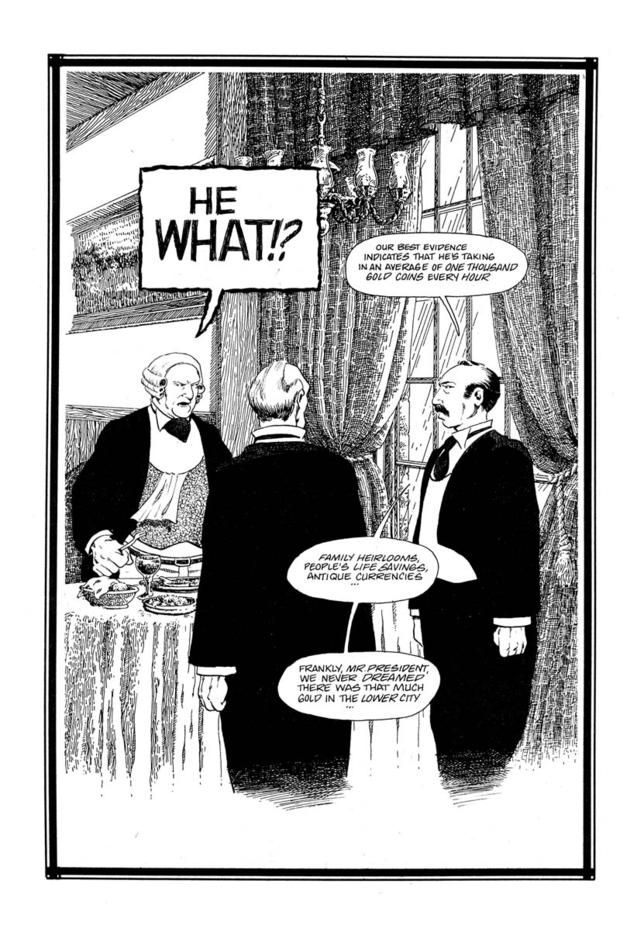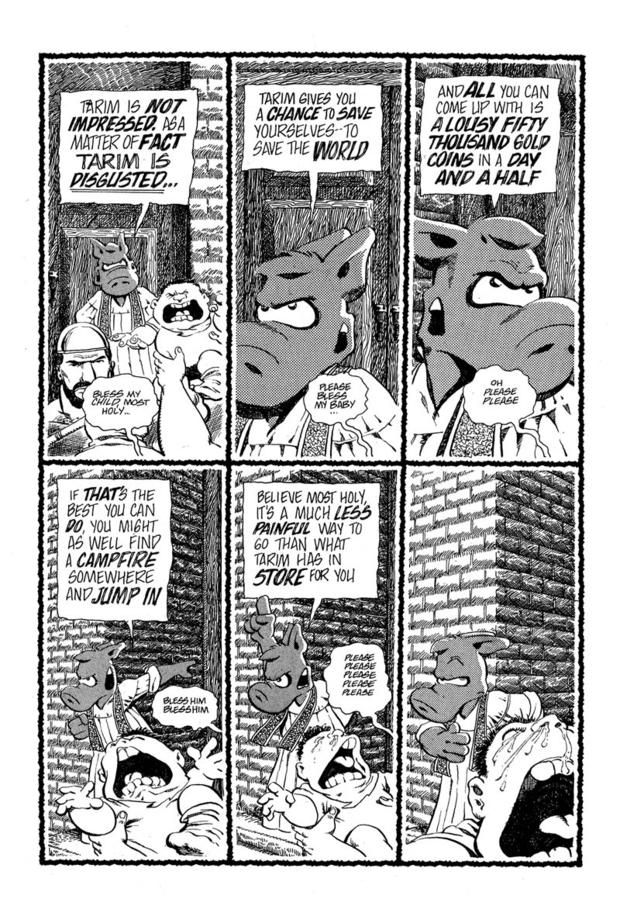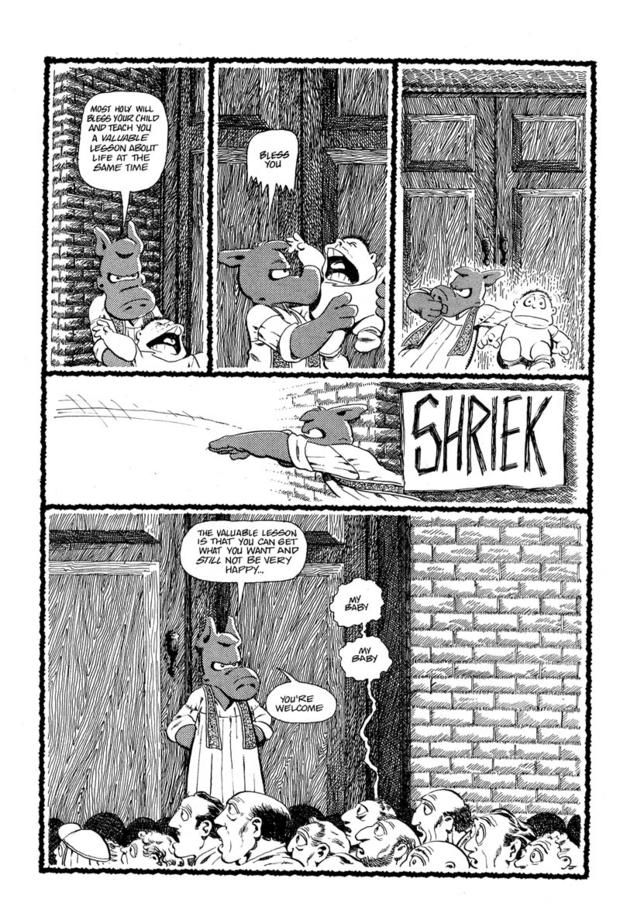You voted, now here are the results of your votes for your favorite comic book creator runs of all-time! We'll be revealing five runs a day for most of the month. Here is a master list of all of the runs revealed so far.
Here's the next five runs...
50. Brian K. Vaughan and Tony Harris' Ex Machina – 184 points
Ex Machina #1-50 plus 4 specials
Ex Machina is Brian K. Vaughan's take on what a superhero in the real world would appear like, as well as what would happen if a former superhero became Mayor of New York. In doing so, Vaughan gets to make points about superheroes AND politics (as opposed to politics and poker) while being ably assisted by Tony Harris' realistic artwork.
Mitchell Hundred was a civil engineer who gained superpowers by a mysterious seemingly alien object. He now has the ability to communicate with mechanical devices. He became the world's first superhero but after a short career he retired and ran for Mayor as an independent. His candidacy was going nowhere until he came out of retirement to save one of the Twin Towers during 9/11. Now a world famous celebrity, he is easily elected Mayor of New York.
The series follows his term in office, although there are tons of flashbacks. Vaughan expertly uses time jumping to inform his stories.
At one of his earliest speeches as Mayor, a man tries to shoot him (feeling Hundred is an alien)...
The cast of the book is a fascinating one, from Deputy Mayor Wylie to Hundred's two closest friends, Bradbury - his head of security and Kremlin - a family friend of Hundred's since childhood that helped him become a superhero in the first place who is none too thrilled at Hundred giving up superheroics to be a politician. That is just a sampling of the many cool characters who make up Hundred's staff.
The book took an interesting approach vis a vis fill-ins. Rather than having normal fill-in issues, they would have one-shots by other artists to fill-in. This way, Harris would be the only artist to draw Ex Machina proper.
49. Peter David’s 2nd Run on X-Factor – 189 points (2 first place votes)
Madrox #1-5, X-Factor (Vol. 3) #1-50, #200-current (#245)
Peter Davis proved Thomas Wolfe wrong when he returned to X-Factor over a decade after he initially left the series. In an acclaimed mini-series starring Jamie Madrox, David re-envisioned the Multiple Man as a private detective. In addition, a new twist to his powers was introduced, which was that each of his duplicates now had their own personalities. At the time, the mini-series (which was quite good) seemed like it was designed to spin into a possible series, but I know I certainly didn't think anything would ACTUALLY come of it (although I hoped it would). Well, I was wrong as the series actually spun off a brand-new X-Factor series, starring Madrox as the head of X-Factor Investigations, including a few of his former teammates from David's first X-Factor team (Strong Guy and Wolfsbane) as well as peripheral mutant characters Siryn, M and Rictor. Also, spinning out of House of M, David added Layla Miller to the team. Miller, whose power is that she "knows stuff."
This new series was an almost indescribable mixture between a detective series, an X-team and a dark comedy, with a good deal of relationship-based intrigue mixed in, as well.
As time went by, former X-Force member Shatterstar also joined the team and David made explicit the implied relationship between Shatterstar and Rictor. Former X-Man Longshot also joined the team. In many ways, David's X-Factor was the mutant version of stone soup. David would make a delicious meal out of whichever mutants weren't in use in other titles. The problem with that is that David would constantly have to write around characters being taken from him, like Wolfsbane was for a time and which recent addition Havok (also a former X-Factor member) just recently was for Uncanny Avengers.
From a recent "point one" issue, we see Madrox explain X-Factor to a young mother who lives in Madrox's childhood home...
The series has seen a LOT of different artists over the years, with Paolo Raimondi, Leonard Kirk and Valentine De Landro (who drew the sample pages) being the main trio of artists. De Landro has drawn the most issues total.
48. Kurt Busiek and Brent Anderson’s Astro City - 198 points (2 first place votes)
Kurt Busiek's Astro City #1-6, Kurt Busiek's Astro City Vol. 2 #1-22 (plus a #1/2), Astro City: Local Heroes #1-5, Astro City/Arrowsmith: The Flip Book #1, Astro City Special: Supersonic #1, Astro City: The Dark Age: Book One #1-4, Astro City: The Dark Age: Book Two #1-4, Astro City Special: Samaritan #1, Astro City Special: Beautie #1, Astro City Special: Astra #1-2, Astro City: The Dark Age: Book Three #1-4, Astro City Special: Silver Agent #1-2, Astro City: The Dark Age: Book Four #1-4
Astro City was, in many ways, a follow-up to Kurt Busiek and Alex Ross' acclaimed mini-series, Marvels, their tribute to the Golden and Silver Age of Marvel Comics. Astro City, too, was a bit of a tribute to that spirit, as, through a series of semi-analogous characters, Busiek repeated the formula that made Marvels such a popular book, having the stories of Astro City told mostly from "Point of View" characters, although sometimes, the superheroes themselves were the point of view characters!
Astro City, which is the actual city in the book, is filled with a ton of superheroes, and Busiek takes his time introducing readers to them over the long run of the title (it's been going on since 1995, although it has been on a bit of a hiatus since 2010). Helping him on his journey is Al, an observer from his own time, who appears in the form of a hologram...okay, actually, artist Brent Anderson, and Alex Ross, who helped design the superheroes of Astro City, as well as draw the covers for the book.
What makes the book so notable is the way that Busiek really seems to grasp the depiction of a standard person, and how awing it must be to live in this world of superheroes, without ever really going to the cynical, "well, if superheroes actually existed, all sorts of bad stuff would happen" routine, which is greatly appreciated.
In a classic issue, we see the human side of stuff like Crisis on Infinite Earths. We meet a man who lost his wife after a villain messed with time. His wife was erased from history and now he is haunted by dreams of her. He is met by a hero who explains the situation...
Wow, talk about powerful storytelling.
The most recent storyline, The Dark Age, was Busiek's take on the later years of superheroes, told through the eyes of two brothers - one a crook and one a cop, and through them, seeing how superheroes slowly got darker during the 1970s and 1980s.
Perhaps the two most notable heroes in Astro City are Samaritan, the Superman analogue, who Busiek gave an origin so great that it was later an inspiration for the ending of Red Son, and The Confessor, who we learn has a tragic secret that makes his heroism even more notable.
Astro City has a bit of an irregular schedule, but you know you are going to get a well-told story with deep humanity each time you crack open an issue of Astro City, so it is well worth the wait.
47. Paul Levitz, Keith Giffen and Larry Mahlstedt's Legion of Super-Heroes – 201 points (5 first place votes)
Legion of Superheroes #281-313, Legion of Superheroes #1-5
Paul Levitz had already had a short, but well-liked, run on the Legion of Superheroes during the 1970s, so when he returned to the book in 1981, readers had reason to be excited, but after a short run with Pat Broderick, Keith Giffen joined Levitz, and when the got together, they clicked in a way no one could imagine - and soon, the Legion was probably DC's second biggest title, next to the New Teen Titans (Giffen joined the book with #285 and Larry Mahlstedt joined with #290).
It was not long on the book before Levitz and Giffen began the epic storyline that became their most notable work, the Great Darkness Saga, which introduced Jack Kirby's Darkseid as a villain of the Legion, in a brilliantly moody action adventure story that saw the Legion involved in a battle greater than any they had seen before (or at least more visceral).
Check out the amazing reveal that Darkseid is the villain (right after Brainiac realizes that Darkseid has turned the entire population of Daxam against the Legion)...
What a stunning reveal.
Giffen's artwork handled both action scenes and character moments with equal greatness, and Levitz was sure to give him a lot of both, keeping the book extremely grounded in humanity, while also keeping the action at a breakneck measure.
Giffen and his inker, Larry Mahlstedt (who also did finishes over Giffen's layouts on a number of issues), were also quite good at depicting the future as a Kirby-esque place of bizarre devices and places.
After the Great Darkness Saga, and a few character pieces, they had the landmark 300th issue, after which Giffen began to experiment with his artwork while, at the same time, he began to have more of an influence in the writing department.
Levitz, Giffen and Mahlstedt launched a brand-new Legion series together, a brutal storyline that left one Legionnaire dead, and Giffen departing the book.
Levitz continued his run with artists Steve Lightle and Greg LaRocque, until eventually Giffen returned for the conclusion of the new volume of the Legion, at which point Levitz basically retired from writing to concentrate on his executive position at DC. Recently, Levitz returned to writing and is currently doing two books for the New 52, World's Finest and a return to the Legion (he actually returned to the book before the relaunch).
46. Dave Sim and Gerhard’s Cerebus – 203 points (10 first place votes)
Cerebus #1-300 (Gerhard from #65-300)
Dave Sim's Cerebus, which stars the short grey-skinned anthropomorphic aardvark, Cerebus, originally debuted as, if not a take-off, at least similar in tone to Steve Gerber's Marvel comic, Howard the Duck, in that it was an anthropomorphic animal used for satirical purposes. In the original storyline in the late 1970s, Conan the Barbarian was the main target, although other pop culture figures were featured. Cerebus was a hard-living mercenary with little morality who got involved in various adventures.
This changed with the second storyline, the 25-part epic, High Society, where Cerebus gets involved with politics, applying his rough and tumble style to the world of, well, high society. Through this, he ends up becoming Prime Minister, although that does not exactly work out, leading to the massive two-part epic, Church & State, which took about 60 issues, and involved Cerebus becoming Pope.
As you might imagine, Cerebus is corrupted by the power...
These stories saw a change in the series to becoming one of the most intelligent ongoing comic book series out there, with a great deal of wit and wisdom.
The rest of the series 300 issues (Sim noted that he would do exactly 300 issues, with Cerebus dying in the last issue) have a series of slightly-less focused stories, although, as the title continued, the work took on an approach more similar to Sim's own life, which included heavier religious overtones, plus specific attacks upon feminism/homosexualism.
From #65 on, Sim drew the book with artist Gerhard, whose detailed backgrounds were absolutely stunning, and became a major attraction of the series.
Cerebus never stopped doing parodies, though, and throughout the run, comics and pop culture and life, in general, were given parody treatment (The Punisher and Sandman being two notable examples).
In 2004, the series ended, as promised, with issue #300.

